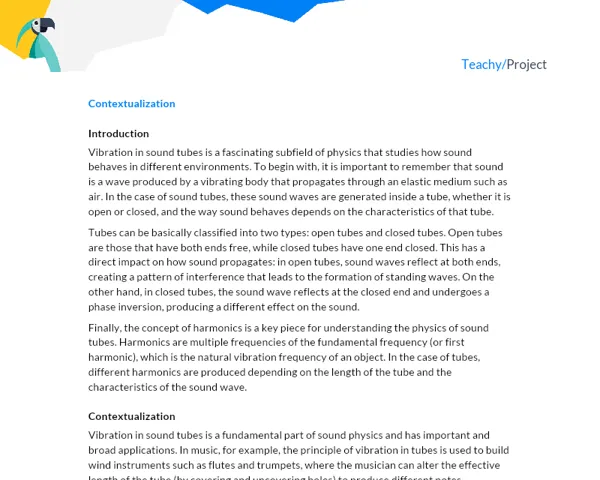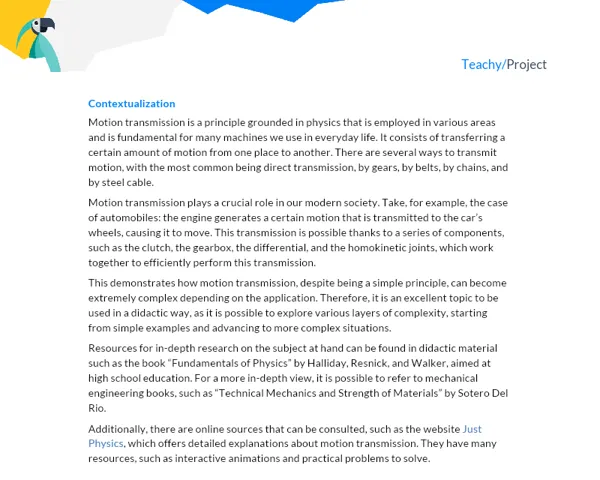Contextualization
Physics, as a science, seeks to explain and understand the laws that govern the Universe. One of these laws is the conservation of momentum. This principle is one of the most fundamental in all of physics, and its understanding can be the key to understanding many phenomena, from collisions of subatomic particles to the movement of planets.
Momentum, also known as linear momentum, is a vector quantity that takes into account the mass of an object and its velocity. Its unit in the International System is Kg.m/s. One of its main characteristics is that, in an isolated system, that is, without the influence of external forces, momentum is conserved. This means that the sum of the momenta before and after any event (such as a collision, for example) remains constant.
Examining and understanding the conservation of momentum can lead us to a variety of practical applications. Among these applications, we can mention: rocket propulsion systems, actions and reactions in sports, automotive safety (during collisions), among others. Therefore, it is an extremely relevant concept that is part of our daily lives, often without us realizing it.
The conservation of momentum is a basic principle that governs many of the physical phenomena we see around us. From a shopping cart being pushed to the movement of planets around the Sun, the conservation of momentum helps explain what we see. So much so that this is an extremely important theory in modern science, being used in various areas of physics, such as quantum mechanics, particle physics, and astrophysics.
Fortunately, there are several resources available for those who wish to delve deeper into this topic. On the web, for example, it is possible to find a series of sites and videos that offer more detailed explanations and real-world examples. Some of these resources are:
- Khan Academy Video on Conservation of Momentum: https://www.khanacademy.org/science/physics/linear-momentum
- Brazil Escola Article on Momentum and Impulse: https://brasilescola.uol.com.br/fisica/quantidade-movimento-impulso.htm
- Ciência Todo Dia Channel Video on How Rockets Work: https://www.youtube.com/watch?v=0yjLx-YK-AI
Remember, these are just initial resources. You are encouraged to seek additional information and make sure you fully understand the topic before starting the project.
Practical Activity
Title: Conserving Motion: A Practical and Theoretical Investigation
Project Objective:
This project aims to provide an in-depth understanding of the concept of conservation of momentum. It also seeks to apply this concept in a real-world scenario and promote collaboration and teamwork among students.
Detailed Project Description:
Students will conduct a series of practical experiments to investigate the conservation of momentum. They will conduct research to understand the theoretical concepts involved and apply them in the analysis of the experiment results. The project will be integrated with the mathematics discipline, as students will need to apply mathematical concepts in calculating momentum and analyzing their data.
Required Materials:
- Toy cars (two per group)
- Flat and smooth surface
- Tape measure
- Stopwatch
- Scale
- Paper and Pen for recording results
- Internet access
Detailed Step-by-Step for Activity Execution:
- Students will be divided into groups of three to five members.
- Each group will receive two toy cars. They will measure the mass of each car using the scale and record this data.
- Students will conduct a series of tests in which one car will be launched with a certain velocity towards the other car, which will be initially at rest.
- Students will measure the distance the cars traveled after the collision using a tape measure.
- Students will use a stopwatch to measure the time required to travel this distance, which will allow them to calculate the velocities of the cars after the collision.
- With this data, students will calculate the momentum before and after the collision and verify if there was conservation of momentum.
- Students should make several attempts to verify the reliability of their results and discuss any irregularities or experimental errors.
- Students will conduct theoretical research to understand the basis of momentum concepts and its conservation, and how these concepts apply to the results of their experiments.
- Students will also explore other practical applications of momentum conservation in different fields, such as particle physics and astrophysics, to understand the relevance and application of the concept.
- After completing the practical part and the theoretical research, groups will write a detailed report discussing their findings.
Project Deliverables:
-
Each group must submit a detailed written report of their project.
a. Introduction: Describe the relevance and application of the concept of conservation of momentum in the real world and the objective of this project.
b. Development: Explain the theory behind the conservation of momentum, detail the practical activity performed, the methodology used, and present the results obtained. Include tables and graphs to better illustrate the collected data and results.
c. Conclusion: Conclude the work by summarizing its main points, explaining the learnings obtained, and the conclusions drawn about the project. Discuss any irregularities or experimental errors found and how they can be improved in future investigations.
d. Bibliography used: Indicate the sources on which you relied to work on the project such as books, web pages, videos, etc.
-
The final submission should also include an oral presentation by the group explaining the project, the results, and the conclusions. The presentation should be clear, concise, and based on the work done, with each group member participating.



